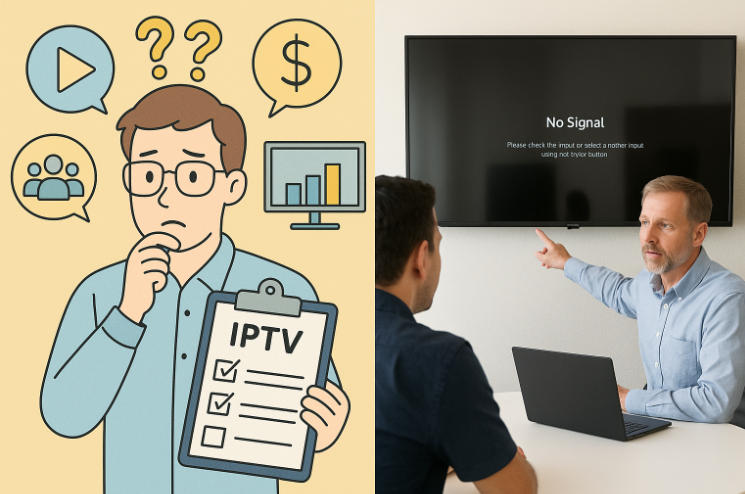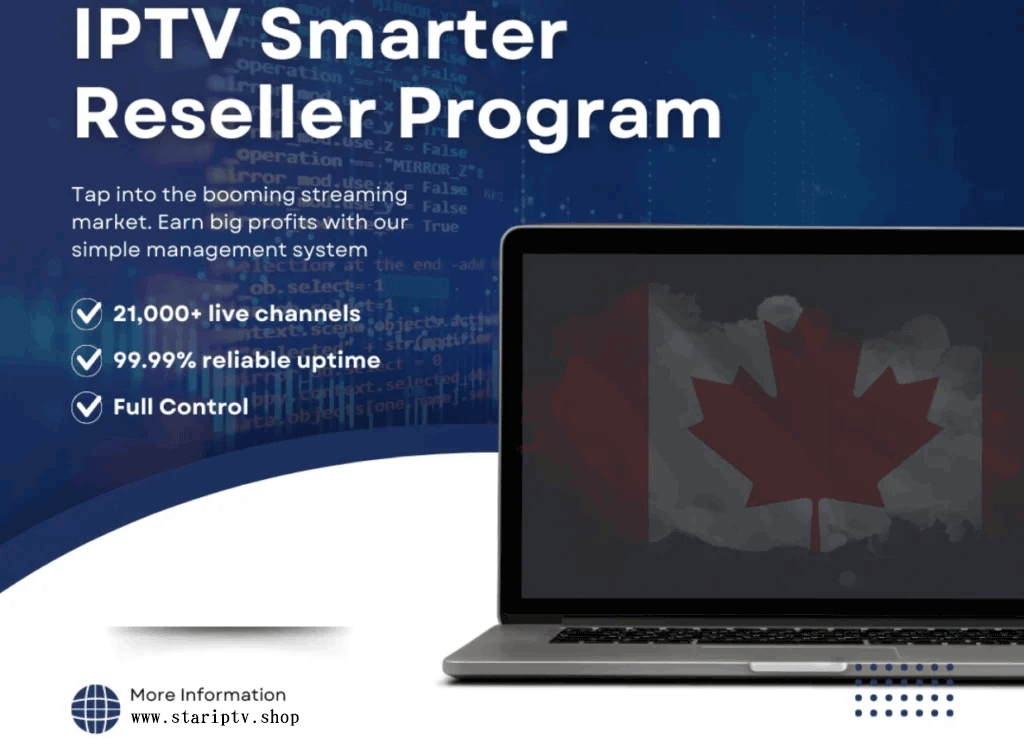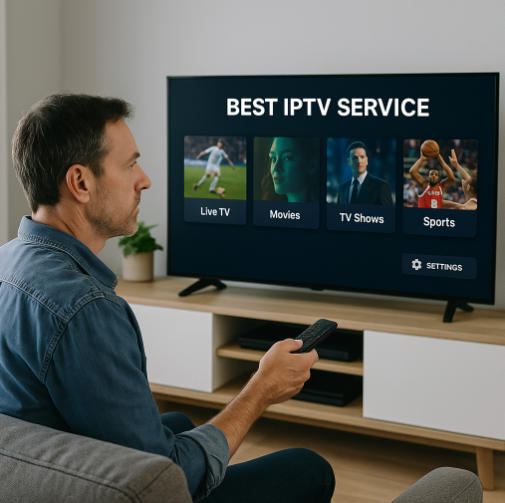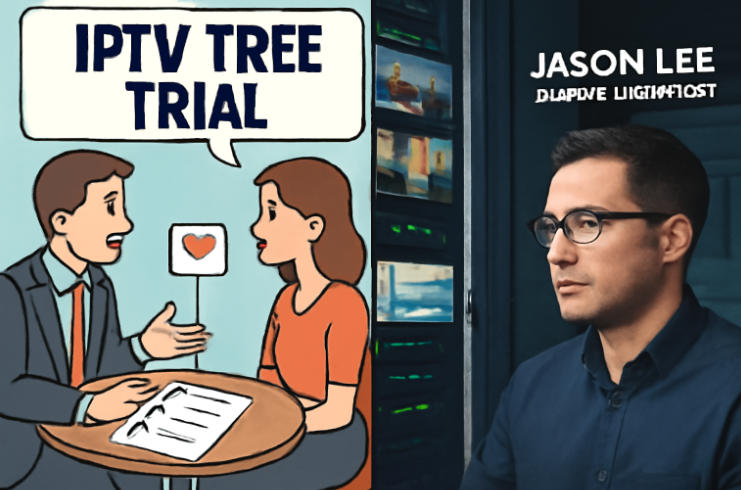Picking the best IPTV in 2025 ain’t just about crystal-clear streaming anymore—it’s about making sure what you buy actually works with your setup, your users, and your budget. Bulk buyers aren’t looking for fluff—they want real answers, fewer tech headaches, and solid value for their money.
If you’re outfitting screens in hotels, gyms, offices, or even across multiple locations, the buying process can feel like sorting wires in the dark. Too many providers promise the moon, but few deliver when it’s go-time. That’s where things get messy.
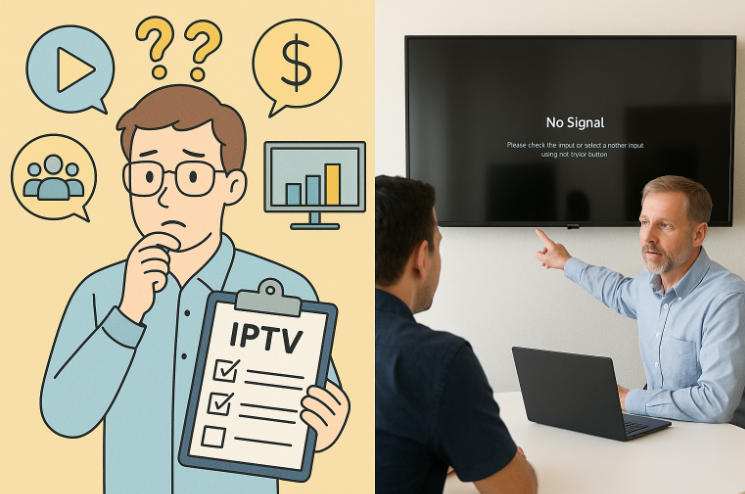
“I’ve seen buyers waste thousands just because no one told them their smart TVs wouldn’t play nice with the IPTV system they ordered,” says Daniel Reaves, senior systems engineer at Star IPTV.
This guide was built to help you avoid that kind of pain. We’ll walk through the gear that actually works, how to trim down your shortlist, spot pricing traps, and get everything up and running without losing your weekend to tech support. (If you’re ready to test a provider as you read, grab an IPTV free trial first, then compare results.)
What Devices Work Best with IPTV Services?
Choosing the right devices is the backbone of IPTV success. One wrong call, and even the best IPTV service can end up looking like a pixelated mess.
Smart TVs vs. Android Boxes: Which Deliver Better IPTV Stability
When comparing a Smart TV to an Android Box, it's like matching an all-in-one machine to a modular setup. Here's how they stack up for IPTV:
Smart TVs
Built-in apps for IPTV
Simple setup, but firmware updates can lag
Limited customization
Android Boxes
For commercial buyers, Android Boxes offer more control and adaptability. But Smart TVs still rule in environments where simplicity and aesthetics matter more than backend tweaking.
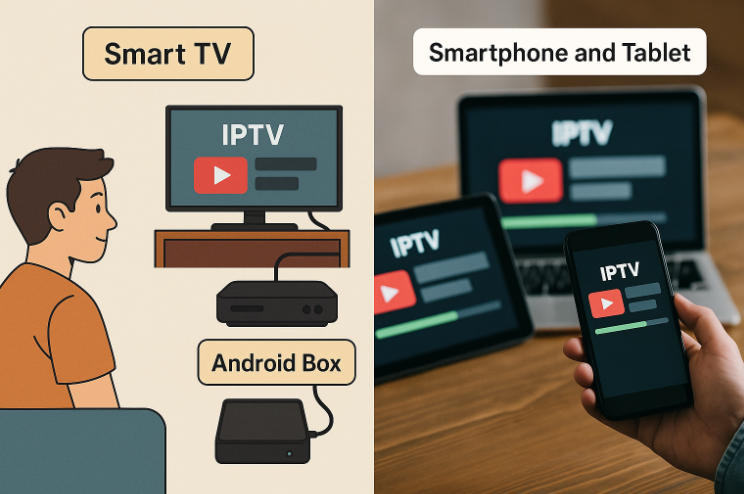
Industry Insight: “Android Boxes give us way more control in enterprise IPTV rollouts,” says Jake Emerson, Lead Engineer at Star IPTV. “They allow firmware control, remote updates, and advanced security settings, which Smart TVs often lack.”
(If you’re planning purchases, compare them against your IPTV setup guide so device choices align with deployment steps.)
IPTV on Smartphones and Tablets: Portability or Pain Point?
The idea of watching IPTV on-the-go sounds awesome… until your staff tries switching networks mid-stream or juggling a VPN app to get regional access.
Here’s what makes mobile IPTV both a gift and a headache:
Portability: Fantastic for remote teams, mobile fieldwork, and on-the-move streaming.
Challenges:
Smaller screens affect experience
Wi-Fi variability causes buffering
Battery drain during high-quality streaming
Device overheating with extended 4K streaming (remember bandwidth needs—Netflix lists 15 Mbps for 4K and account quality settings if you’re testing UHD)
Smartphones and tablets shine in light-use scenarios. But if your IPTV content includes sports events or high-definition TV shows, expect lots of tech support calls.
Set-Top Boxes and Fire TV Sticks for Commercial Installations
Set-Top Boxes and Fire TV Sticks are a favorite among business buyers for a reason—they just work.
Set-Top Boxes:
Great for structured environments (hotels, hospitals, campuses)
Offer security control and wired connection stability
Easy to bulk-configure
Fire TV Sticks:
Lightweight, low cost
Fast install times
Limited admin control in commercial scenarios (Fire TV platforms natively play HLS content and are built around common web/HTTP video delivery)
The verdict? For high-traffic setups, go with Set-Top Boxes. Fire TV Sticks are ideal for lighter-use deployments like office lounges or lobby screens.
(Need package-level pricing for scale? Check IPTV Packages before you commit.)
Gaming Consoles and Computers: Hidden IPTV Streaming Potential
Most buyers overlook gaming consoles and PCs when building an IPTV ecosystem—but that’s a missed opportunity. Here's why:
Gaming Consoles like Xbox can run IPTV players (e.g., MyIPTV Player on Microsoft Store), and PlayStation supports mainstream media apps like Plex.
Computers, especially media PCs, can run IPTV clients or even act as local media servers.
Software clients like Kodi (IPTV Simple Client) or VLC turn a regular PC into an IPTV hub.
Both support 1080p and 4K resolution, often with superior buffering control.
The catch? You need basic tech know-how to manage apps, updates, and network protocols. Still, for hybrid work environments or creative teams, the versatility here is gold.
(Star IPTV supports multi-device support across Smart TVs, Android/iOS, MAG & IPTV boxes—handy if you’re mixing consoles and PCs.)
Too Many IPTV Options? Here’s How to Narrow It Down
Even the savviest buyers feel swamped with IPTV choices—here’s how to stop overthinking and start choosing smart.
Prioritizing Features: From Catch-up TV to 4K Streaming
Choosing the right IPTV isn’t about grabbing the flashiest package. It’s about knowing what matters to your users.
Catch-up TV is a lifesaver for customers who hate missing live shows.
Parental controls are must-haves for family-oriented setups.
4K streaming sounds great, but only makes sense if your displays can handle it (and your network meets UHD bandwidth).
A clean user interface beats complicated menus any day.
Multi-device support ensures your content works on tablets, Smart TVs, and Fire Sticks without hiccups.
Quick Tip: Avoid paying extra for features like recording or EPG if your audience won’t use them daily. (Star IPTV’s IPTV streaming and EPG capabilities are detailed in the FAQ.)
Choosing the Right Content Package: Sports, News, or Kids Programming
Too many bundles out there? Zoom in on what your viewers actually want. Here's a quick breakdown:
| Audience Type | Must-Have Channels | Extra Value Adds | Bundle Notes |
|---|---|---|---|
| Sports Bars | Sports channels, ESPN | Premium leagues | Look for latency control |
| Families | Kids programming, movies | Parental filters | Check cartoon availability |
| News Lounges | News channels, global TV | International content | Prioritize real-time feed |
Skip “all-in-one” bundles unless you’re serving a very mixed crowd. You’ll just pay for fluff nobody watches.
(If you’re experimenting before you scale, use a Wholesale IPTV pricing angle with trials to gauge real demand.)
Balancing Network Protocols: HLS, DASH, or RTMP?
You could have the best content in the world—but if your stream stutters, your customers vanish. Protocols matter.
“A poorly matched protocol to your network setup can tank streaming quality, no matter the subscription cost,” says Leo Tan, Lead Engineer at Star IPTV (2024 Annual Tech Report).
HLS is great for modern devices and works best with Apple systems.
DASH supports adaptive bitrate well—perfect for unstable Wi-Fi zones.
RTMP is older, but still useful for live events if configured properly.
Protocols directly impact latency, buffering, and video quality (YouTube notes HLS/DASH generally have higher latency than RTMP for live ingestion).
Remember: A great IPTV setup isn’t just about content—it’s also about how smoothly that content travels from server to screen. (For deployment templates, the Star IPTV IPTV setup guide maps protocol choices to devices.) StarIPTV.shop Knowledge Base
5 Signs You’re Overpaying for IPTV Services
Spotting hidden costs helps buyers avoid wasting money on IPTV subscriptions.
Evaluating HD vs. 4K IPTV: What Are You Really Paying For?
4K IPTV offers sharper video resolution, but it’s not always essential if your users mainly view on small screens like tablets or smartphones.
HD IPTV requires less bandwidth, lowering streaming costs for regions with weaker networks.
4K IPTV, while premium, can raise total delivery costs because UHD needs higher throughput (Netflix: 15 Mbps for 4K).
For bulk buyers, the smartest move is calculating picture quality demands against actual customer expectations. Many times, HD IPTV delivers more than enough value.
(When you’re ready, align demand with a scalable IPTV subscription.)
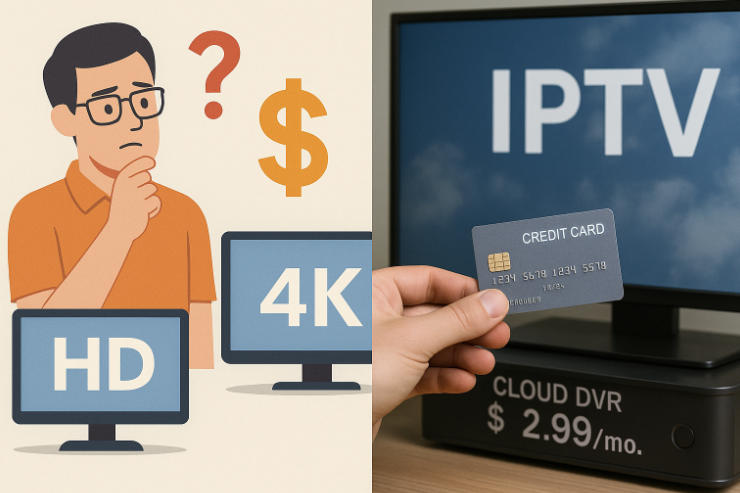
Hidden Costs in Multi-Screen Viewing and Cloud DVR Services
Multi-screen streaming and cloud DVR look great in marketing, but:
Extra fees often kick in when activating more than two or three devices under one subscription.
Storage limits for cloud DVR are capped, and add-ons for expanding capacity can raise monthly subscription costs.
Service add-ons like feature pricing for “unlimited” multi-screen viewing rarely deliver true unlimited access—it’s usually capped by device limits.
Buyers should calculate total subscription costs, including add-ons, not just base pricing. That way, you avoid nasty billing surprises.
(If you’re designing bulk policies, Star IPTV’s IPTV streaming and reseller tooling help you model real usage before purchase.) StarIPTV.shop Knowledge Base
Streaming Device Conflicts? Here’s How to Avoid Them
Common IPTV Device Mismatches in Bulk Installations
Bulk installations can be a headache if your device stack isn't consistent. Here's what to watch out for.
Buying IPTV devices in batches from different suppliers often leads to hardware mismatches, especially in chipset versions and firmware support.
Minor network configuration issues, like incompatible DNS or gateway settings, can cause total blackouts on certain devices.
When mixing Android Boxes with Fire TV Sticks, setup issues emerge due to different launchers or app environments.
Most of the time, businesses don't realize the device compatibility gap until tech support gets swamped on day one. Better to test three models thoroughly before scaling. (Star IPTV’s IPTV setup guide includes a simple test matrix.)
Regional Compatibility Issues: Europe, North America, and Asia Compared
Installing the same IPTV system globally? You might run into more issues than you’d expect.
Different power standards (e.g., ~120V in North America vs. ~220–240V in Europe/Asia) often require adaptors or risk equipment damage.
Geo-restrictions mean some apps or content won’t stream outside their licensed region (see what geo-blocking is and why it’s used).
Video format defaults historically differ (NTSC vs. PAL), which may affect legacy gear and some capture/distribution hardware (overview).
Network protocols such as HLS or MPEG-TS behave differently depending on latency across regions.
| Region | Power Voltage | Common Video Format | App Restrictions |
|---|---|---|---|
| North America | ~120V | NTSC | Moderate |
| Europe | ~230V | PAL | Low |
| Asia | ~220–240V | PAL/NTSC Hybrid | High |
So, yeah—before shipping 500 devices to three continents, run regional tests or expect returns.
(Need help tailoring by country? Talk to us or start with a Bulk buyers IPTV overview.)
How Protocol Support Affects Streaming on Fire TV and Android Boxes
Streaming protocols like HLS and DASH often don’t work equally on both platforms. Fire TV ecosystems are heavily optimized for HTTP Live Streaming, while Android boxes natively support HLS and DASH via ExoPlayer; older RTMP workflows may need special handling.
Codec support becomes a real issue when streaming 4K content—especially if the hardware lacks HEVC decoding or proper DRM licenses.
Some IPTV apps require specific network protocols like UDP for live TV or TCP for on-demand playback. If your device only supports one, prepare for buffering nightmares.
"We saw a 40% drop in support tickets when we standardized Fire TV with HLS and Android Boxes with DASH across deployments."
— Lena Morris, Head of Operations, Star IPTV (2024 Q4 Report)
Step-by-Step Guide to IPTV Installation in Bulk
Bulk IPTV rollouts aren’t rocket science, but you can’t wing it either. Here’s how to plan and execute cleanly—without the tech headaches or extra invoices.
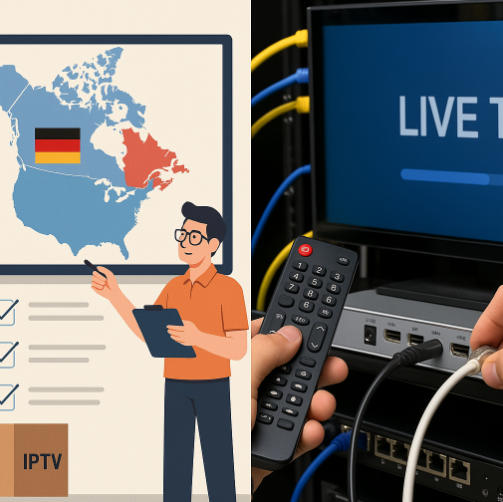
Planning IPTV Rollouts by Region: United States, Canada, Germany
Get familiar with regional licensing rules (see geo-blocking rationale here)
Confirm power supply standards for IPTV hardware (mains voltage by country reference)
Preload channel packages that match local language/content preferences
Use region-based deployment strategies to speed up the install
The United States often favors sports-heavy IPTV bundles, Canada leans toward news programs and kids programming, while Germany tends to focus on documentaries and local TV shows. Tailoring your plan by region isn’t just smart—it’s critical for engagement. And don’t forget: voltage mismatches and region-locked apps can ruin bulk deployments if overlooked.
(If you’re comparing vendors, align features against IPTV Packages.)
Bulk Configuration for Cloud DVR and Parental Controls
Define usage profiles: Set templates for different user types (e.g., family rooms, break rooms).
Automate rule application: Push Parental Controls to all devices via central config tools.
Enable DVR by default: For corporate and hotel setups, this keeps users in control.
Test access levels: Ensure adult content restrictions are properly applied.
Bulk configuration saves time and prevents the support line from ringing nonstop. It’s all about system settings that scale—no one wants to click through 300 menus one by one.
(Star IPTV details controls, anti-freeze tech, and device support in the What is IPTV / FAQ.)
Setting Up Offline Downloads on Employee Devices
Choose a secure offline-capable IPTV provider
Roll out download permissions via device configuration profiles
Schedule content refreshes weekly to keep things up to date
Make sure offline content access is encrypted
In field teams and remote workforces, mobile access is gold. Offline downloads = zero excuses for not watching required content. You’ll also cut down on data costs when Wi-Fi isn’t an option.
(Need free player options for pilots? See IPTV Free App Solutions for Bulk Buyers.)
Testing Live TV Channels and Video on Demand Stability
Let’s talk QA—because IPTV without reliability is just digital clutter.
Test peak-hour Live TV channel switching (especially sports and news)
Stream VOD content across all device types: Smart TVs, tablets, Android Boxes
Record glitches and latency across different regions
Reboot hardware setups and retest—hardware issues masquerade as streaming issues
Getting this wrong can lead to refund requests, user frustration, and brand damage. Quality assurance isn’t sexy—but it sure saves your backend team from endless firefighting.
(Use the IPTV setup guide to standardize test cases.)
Ensuring Protocol Consistency: UDP, TCP, and MPEG-TS
“The biggest mistake new IPTV operators make is ignoring protocol compatibility. You don’t want to discover your network only supports TCP after 1,000 units are deployed.”
— Marcus Lenz, Senior IPTV Engineer, Star IPTV, 2024 Global Network Protocol Summit
TCP is reliable but slow. UDP is fast but vulnerable to packet loss. MPEG-TS plays nice across both—if your system supports it. Protocol validation before deployment is non-negotiable.
Key moves:
Align your hardware and streaming protocols before purchasing
Use test simulators to validate UDP and TCP performance under load
Document each device’s supported protocol stack in your internal system
One mismatch, and suddenly you’ve got 500 Android Boxes that won’t play nice with your middleware. (Cross-check with device capabilities in the setup guide.)
Conclusion
Buying IPTV in bulk isn’t just about grabbing a big package and calling it a day—it’s more like building a house. You’ve got to start with a solid foundation: the right devices, compatible features, and support that doesn’t fall apart when things get busy. From Smart TVs to Android boxes, and across regions like North America or Germany, it’s all about making the puzzle pieces fit together without breaking the bank or your sanity.
Here’s your shortlist for getting the most out of your setup:
Prioritize features like Multi-Screen Viewing and Cloud DVR
Stick to proven devices: Fire TV Sticks, Set-Top Boxes, and Smart TVs
Avoid paying extra for 4K if you’re streaming in standard rooms (validate with UHD bandwidth needs)
Check region compliance—what works in Canada might glitch in Asia
If you’re still on the fence, know this: finding the best IPTV solution for your business doesn’t need to be a guessing game. Start with what matters, skip the fluff, and choose a partner who’s done this before. When you’re ready to price it out, compare options on IPTV subscription and spin up an IPTV free trial to verify performance on your own network.
What devices work best with IPTV services?
Smart TVs work well if apps are pre-installed
Android Boxes are flexible and good for bulk use
Fire TV Sticks are small and easy to use
Set-Top Boxes are great for fixed setups
Gaming consoles can stream too, if needed
How do I avoid paying for IPTV features I don’t need?
Keep it simple. Match the features to what your screens and users actually use. Skip fancy stuff like 4K if no one’s watching it, or if your TVs can’t even show it.
What makes a service the best IPTV for big orders?
Works in multiple regions like the U.S. or Europe
Offers lots of content types—sports, kids, news
Lets you choose between HD, 4K, or basic SD
Includes helpful tools like Cloud DVR and Parental Controls
Supports multiple streaming methods like HLS and DASH
Are Fire TV Sticks a good pick for business use?
They work well in many cases, but might lag when you try using too many at once or connect them to heavy-duty networks. Good for smaller spaces or backup setups.
How do I choose the right IPTV content package?
Sports for gyms or bars
Kids shows for schools or families
News for waiting rooms or offices
Documentaries for education or travel hubs
Music for restaurants or lobbies
Which streaming quality should I pick?
If you're using older screens, HD is usually enough. For newer TVs or projectors, 4K or HDR might make a difference—but only if your internet can keep up.
What streaming methods should the best IPTV support?
HLS is common and works on most devices
DASH adjusts to weak networks
RTMP is older but still used in places
UDP/TCP helps with fast or secure streams
Why does IPTV content sometimes not play in certain countries?
Some channels or content are only licensed in certain places. If you’re in the wrong region, you might not get access—especially for news or sports.
What problems come up when installing IPTV in large numbers?
Devices don't always run the same way
Some protocols don’t work on all hardware
Power and wiring needs can slow things down
Setting up Cloud DVR across rooms can get messy
Does the best IPTV offer offline viewing?
Sometimes. Most offline options work only on phones or tablets, not TVs. Be sure to ask your provider if you need this feature for your users.
